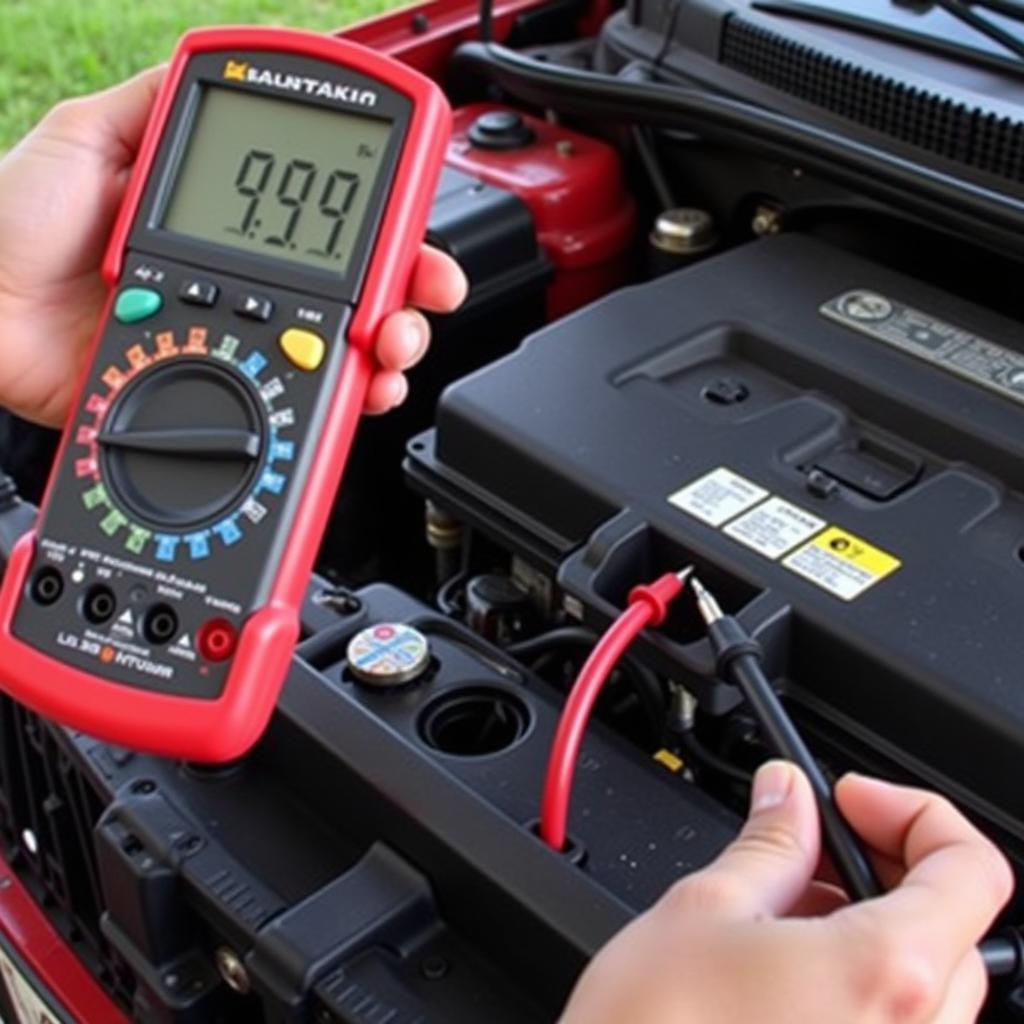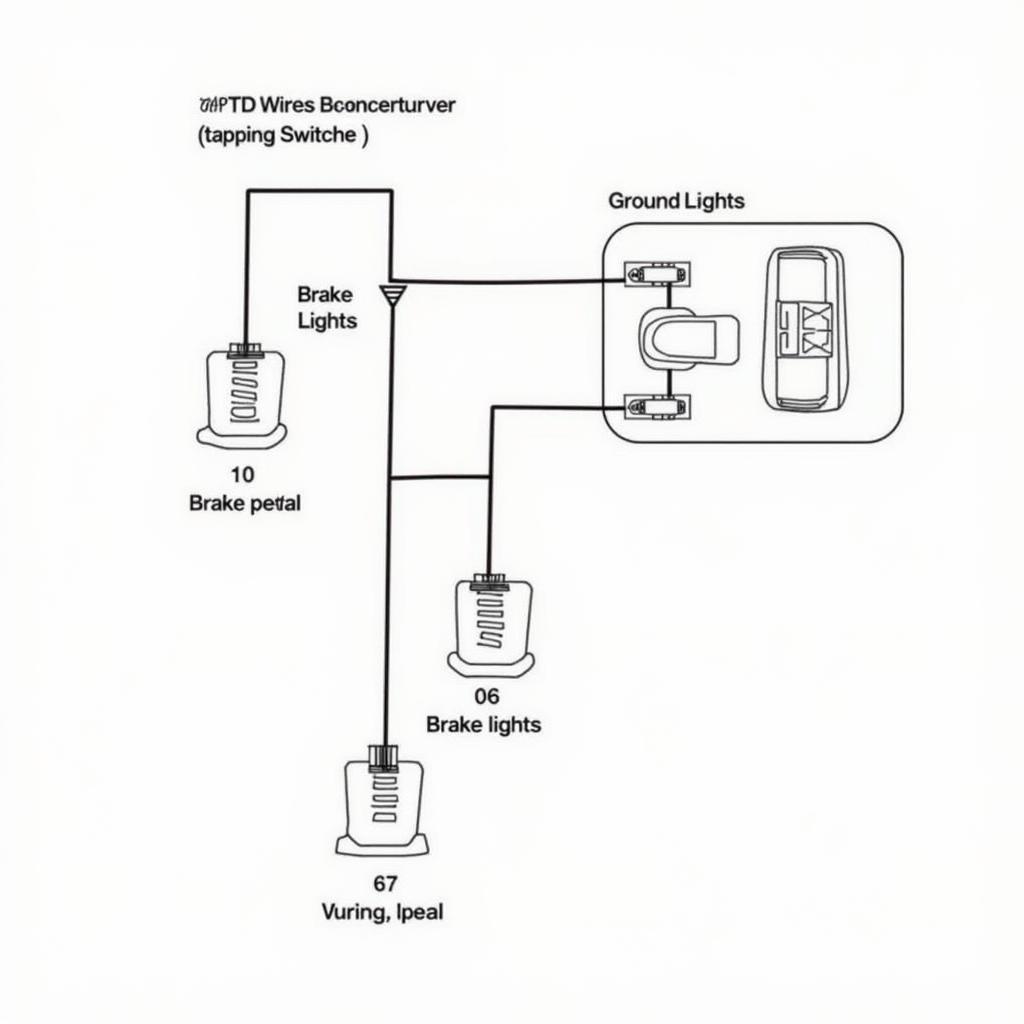A low battery can trigger your check engine light, leaving you wondering what’s wrong. This seemingly simple issue can actually be a sign of more serious underlying problems. This article will dive deep into the connection between a low battery and the check engine light, providing you with the knowledge you need to diagnose and address this issue effectively. Learn more about common car battery issues and how to address them.
Understanding the Low Battery Check Engine Light Connection
Why does a low battery trigger the check engine light? Your car’s computer, the Engine Control Unit (ECU), relies on a steady voltage supply to function correctly. A weak battery disrupts this voltage, causing the ECU to malfunction and potentially log error codes. These codes illuminate the check engine light, alerting you to a problem. This can range from minor glitches to more serious issues with sensors and other components. Sometimes, after replacing a battery, old error codes might remain, requiring you to reset the check engine light.
Have you considered checking the draw on your car battery? A parasitic drain can slowly deplete your battery, leading to the dreaded low battery and illuminated check engine light. Identifying and fixing this drain is crucial for long-term battery health.
Diagnosing the Problem: Is it Really the Battery?
 Testing a car battery with a multimeter
Testing a car battery with a multimeter
Before assuming a low battery is the culprit, it’s important to rule out other potential issues. A failing alternator, for example, could be preventing the battery from charging properly. A simple test with a multimeter can help you determine the battery’s voltage. A fully charged battery should read around 12.6 volts. If the reading is significantly lower, your battery might need replacing. If you own a Ford S-Max, you might be familiar with s max battery drain issues. Understanding the specific problems related to your car model can be invaluable in diagnosing the issue.
Common Causes of a Low Battery and Check Engine Light
- Failing Alternator: The alternator is responsible for charging the battery while the engine is running. A faulty alternator can lead to a low battery and trigger the check engine light.
- Parasitic Drain: Even when the car is off, certain components can draw power from the battery. A significant parasitic drain can deplete the battery overnight, leading to a low battery and a potential check engine light.
- Old Battery: Batteries have a limited lifespan. An old battery might not hold a charge effectively, resulting in a low battery and triggering the check engine light.
- Corroded Terminals: Corrosion on the battery terminals can disrupt the flow of electricity, leading to a low battery and potentially triggering the check engine light.
Fixing the Issue: Steps to Take
- Test the Battery: Use a multimeter to test the battery’s voltage.
- Check the Alternator: Have a mechanic test the alternator to ensure it’s functioning correctly.
- Inspect for Parasitic Drains: Identify and fix any parasitic drains that might be depleting the battery. This could involve checking the draw on your car battery with specialized tools.
- Clean Battery Terminals: Clean any corrosion from the battery terminals using a wire brush and a baking soda solution.
“A low battery can be a symptom, not the problem itself,” says John Miller, Automotive Electrical Engineer. “Always look for the root cause to avoid recurring issues.” A low battery can sometimes manifest as a prius brake system warning light, highlighting the interconnected nature of car systems.
 Cleaning corroded car battery terminals
Cleaning corroded car battery terminals
Preventing Future Issues
Regular maintenance is key to preventing low battery problems. This includes having your battery and alternator tested periodically, cleaning the battery terminals, and addressing any parasitic drains promptly. “Preventive maintenance is far less expensive than dealing with the consequences of a neglected battery,” advises Sarah Johnson, Lead Automotive Technician. For instance, a mk5 golf battery drain fix can be much simpler if addressed proactively.
Conclusion
A low battery check engine light can be a warning sign of a variety of issues, from a dying battery to a faulty alternator. By understanding the connection between these two components and following the diagnostic steps outlined above, you can address the problem effectively and prevent future issues. Remember to regularly check your battery and address any signs of trouble promptly to ensure the smooth operation of your vehicle.
FAQ
-
Can a low battery cause permanent damage? While a low battery itself might not cause permanent damage, the underlying issues that lead to a low battery can, so it’s crucial to address them promptly.
-
How often should I replace my car battery? Car batteries typically last 3-5 years, but various factors can affect their lifespan.
-
Can I jump-start my car with a low battery? Yes, you can jump-start a car with a low battery, but it’s important to address the underlying cause of the low battery to prevent future issues.
-
What is a parasitic drain? A parasitic drain is a continuous draw of power from the battery even when the car is off.
-
How can I test my alternator? You can test your alternator using a multimeter or have a mechanic test it for you.
-
Is it safe to drive with the check engine light on? While it might be safe to drive short distances, it’s important to have the issue diagnosed and addressed as soon as possible to prevent further damage.
-
Can a bad battery cause other warning lights to come on? Yes, a bad battery can affect various systems in your car, potentially triggering other warning lights.

